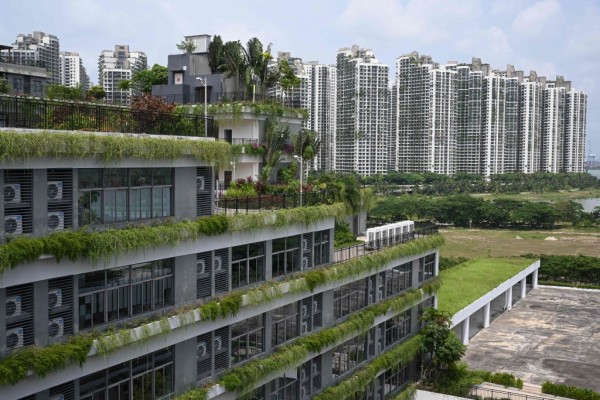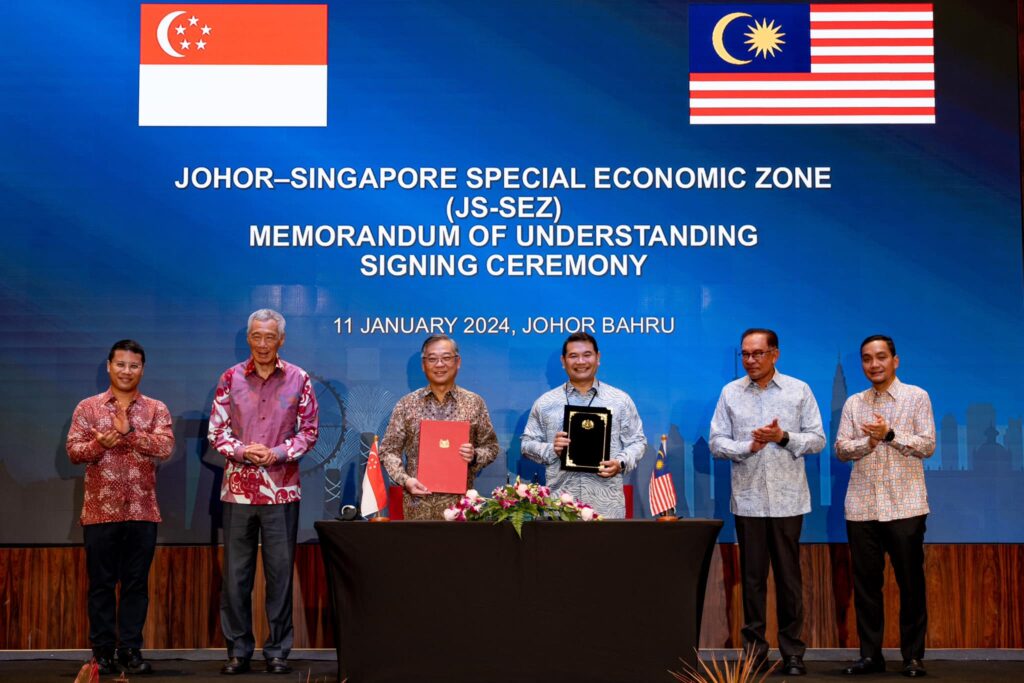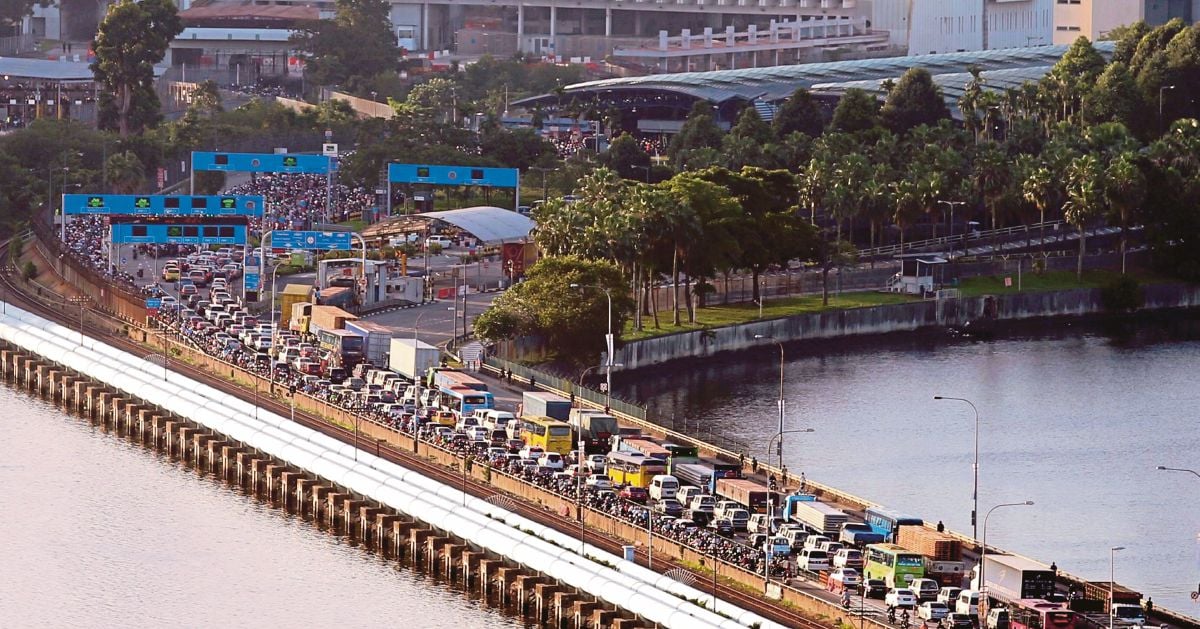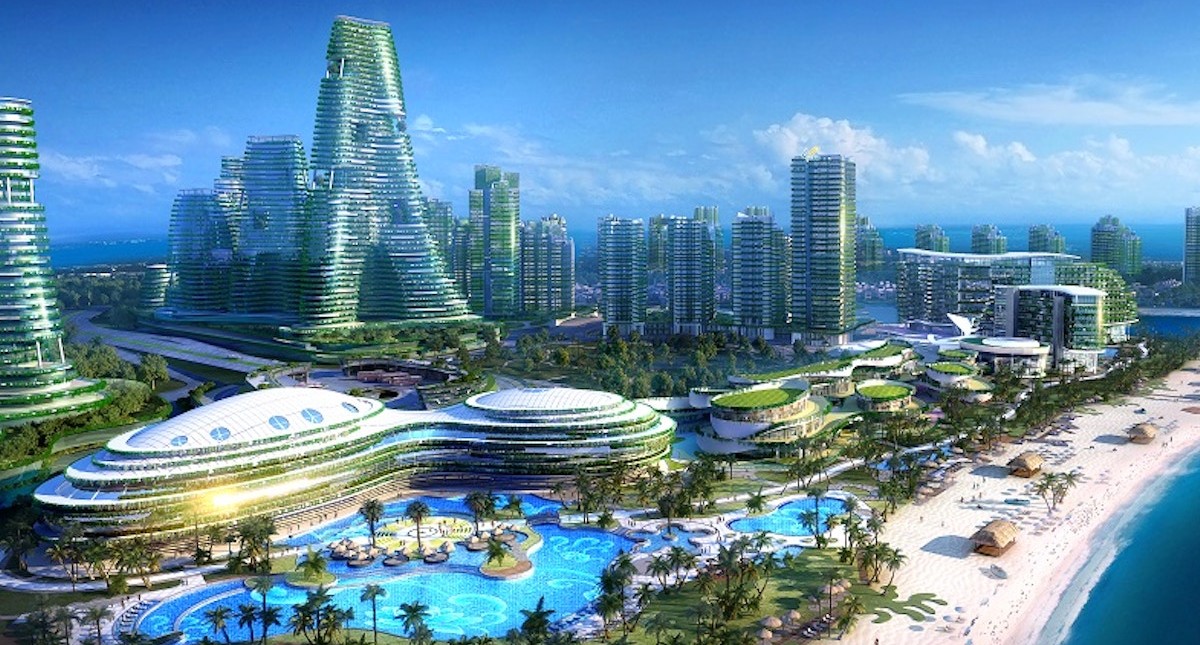The flailing megaproject has potentially been thrown a future lifeline by the Malaysian and Singaporean initiative setting up a special economic zone in Johor. Will it be in time, and will it be enough?
It wasn’t merely one single thing that doomed the $100 billion Forest City megaproject. A number of factors, ranging from an angry prime minister to a global pandemic to an over-reliance on Chinese buyers, all conspired to turn a massively ambitious ‘future city’ at Malaysia’s southern tip into what the global press has dubbed a ‘ghost city.’
THE BACKGROUND
Forest City, situated in Iskandar Puteri, Johor, Malaysia, stands as an ambitious integrated residential development and private town. Initially unveiled in 2006 as a key investment project meant to span the next two decades, it primarily secured its funding from a consortium of mainland Chinese private real estate developers, aligning with the country’s huge Belt and Road Initiative.
Formally inaugurated in 2016 by then-Prime Minister Najib Razak, the project unsurprisingly received the nod from Sultan Ibrahim Ismail of Johor, who has a vested interest in the development. The collaboration involves Esplanade Danga 88, affiliated with the state government subsidiary Kumpulan Prasarana Rakyat Johor (KPRJ), and Country Garden Holding Ltd (CGPV) in a joint venture. CGPV commands 60% of shares, with KPRJ holding the remaining 40%. Forest City falls under the jurisdiction of the Iskandar Puteri City Council and the Iskandar Regional Development Authority.

However, the development was seemingly marked by controversy right from the start. Initially targeting affluent Chinese citizens seeking overseas wealth havens, the project soon faced a downturn in sales, exacerbated by then-Prime Minister Tun Mahathir’s remarks condemning the possible issuance of residence visas in conjunction with property sales, and also the enactment of currency controls imposed by Xi Jinping, which limited annual currency outflows to just $50,000, making property purchases in Malaysia by Chinese nationals all but impossible.
The abrupt decline was further intensified by the 2020–2022 Malaysian political crisis, during which time the government experienced considerable change and instability, and the overlapping global Covid-19 pandemic, resulting in the project being widely branded as a ‘ghost city’ by 2022.

Moreover, quite a lot of criticism has been justifiably directed at the environmental impact of the project, which is situated on reclaimed land. The creation of these artificial islands caused significant habitat destruction in the area, ruining the fishing grounds of local small-scale fishermen, and even changing the natural ebb and flow of tides in the vicinity.
Soon, stories of just a few thousand people living in a massive, but largely unfinished development meant to house hundreds of thousands began appearing in the global press, and if the phrase “nothing succeeds like success” is true, then its inverse (“nothing fails like failure”?) is also likely so. The more negative press Forest City attracted, the more buyers fled – in droves. Because of the project’s well-publicised struggles, among other reasons, Country Garden’s, the majority shareholder of Forest City and China’s largest property developer, has found itself in serious financial trouble in the past year, to the point of defaulting on its debt repayments in October.
Experts have pointed to the development’s outsize focus on Chinese buyers as a major reason for its failure, with some reports noting that signage in Forest City was often only in Chinese and schools there were teaching in Mandarin. KGV International property consultant Samuel Tan explained to Al Jazeera that the high proportion of foreign ownership had all but ensured Forest City’s chances at success would be small.
“Any project where there is a majority [of resident-owners], or even more than 40 percent of foreigners is doomed for failure,” he said. “That’s because they don’t come here, they don’t occupy [the properties] here, they don’t spend money here.”
He further said that the project’s developers instead needed to attract primarily Malaysians or Singaporeans. And that’s exactly how the new special economic zone comes into play.
JS-SEZ TO THE RESCUE?
Announced late last year, and with a Memorandum of Understanding (MoU) signed on January 11, 2024, the Johor-Singapore Special Economic Zone (JS-SEZ) began to take shape.
TEG Media and its CEO, Andy Davison, have for months advocated for just such an economic zone, believing that if established and administered in tandem with a special pass or visa that eases cross-border movement between Singapore and Malaysia, the benefits could be considerable for both countries.
Prime Minister Datuk Seri Anwar Ibrahim and his Singaporean counterpart Lee Hsien Loong presided over the JS-SEZ MoU’s signing between Economy Minister Rafizi Ramli and Singaporean Minister for Trade and Industry Gan Kim Yong. The event took place following the completion of the span between Malaysia and Singapore for the Rapid Transit System Link (RTS Link), after which, according to reports, Anwar hosted a luncheon for Lee and his delegation.

Rafizi initially proposed the JS-SEZ after discussions with the Johor state government, and a special task force was established two months later to study its implementation. The zone targets sectors such as electronics, financial services, business-related services, and healthcare, with the goal of improving the business ecosystems of Iskandar Malaysia and Singapore. Johor secured RM70.6 billion in foreign investments last year, with Singapore being the state’s second-largest foreign investor, contributing to approximately 70% of Johor’s total foreign direct investment in the manufacturing sector.
This most recent development, the MoU signing, more formally establishes the JS-SEZ, which is aimed at boosting trade between Johor and Singapore. The JS-SEZ, presumably modelled on the success of a similar initiative in Shenzhen, will enhance business connections and connectivity between the two nations amid global economic challenges.
Now, a timely implementation becomes the key order of business, and we believe that measures to significantly ease cross-border transit is critical to the success of JS-SEZ. It’s one the world’s busiest border crossings already, with the primary link, the Causeway, noted by some sources as the busiest single border checkpoint anywhere in the world. Tales of epic jams of people and vehicles on the Causeway, particularly during weekends and holidays, are legendary, and without serious measures enacted to mitigate these delays, the JS-SEZ would likely face an uphill climb.
Additionally, the scale and scope of the JS-SEZ needs to be defined fairly quickly, as it is currently unknown. Industry observers have said there is a possibility that the JS-SEZ could involve the whole Iskandar Malaysia region, which sprawls across nearly 4,800 sq km, covering Johor Bahru, Kulai, Iskandar Puteri, Pasir Gudang, and part of Pontian. Such an initiative would benefit all the land owners in these regions and would ostensibly level the playing field for everyone, rather than unfairly benefitting only those in certain districts.

If it’s rolled out efficiently and effectively, however, it certainly seems the JS-SEZ would result in a number of benefits to both Malaysia and Singapore. The Forest City development could be reinvigorated, companies in Singapore could take advantage of Johor’s significantly lower costs and greater land area, and Malaysia’s burgeoning property overhang could be reduced as more homes are sold and occupied by people looking to take advantage of the opportunities presented by the JS-SEZ.
"ExpatGo welcomes and encourages comments, input, and divergent opinions. However, we kindly request that you use suitable language in your comments, and refrain from any sort of personal attack, hate speech, or disparaging rhetoric. Comments not in line with this are subject to removal from the site. "





















